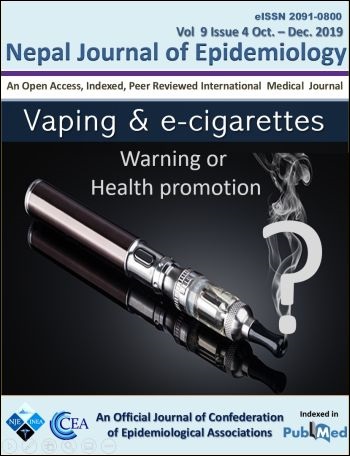Serum calcium level among pregnant women and its association with pre-eclampsia and delivery outcomes: A cross-sectional study from North India
DOI:
https://doi.org/10.3126/nje.v9i4.23150Keywords:
serum calcium level, pregnancy, hospital, dietary calcium intakeAbstract
Background: Calcium requirement increases during pregnancy, thereby increasing the chances of developing hypocalcaemia. Hypocalcaemia may be associated with pregnancy-related complications. Therefore, we planned this study to estimate the prevalence of hypocalcaemia among pregnant women attending secondary care hospital, and to study the association between hypocalcaemia and pregnancy outcomes.
Materials and Methods: This study was conducted in a secondary level hospital at Ballabgarh, district Faridabad, Haryana, India. Consecutive pregnant women with gestation period more than 28 weeks were enrolled. Dietary calcium intake was ascertained using 24-hour dietary recall method. Serum calcium estimation was done by Biolis 24i auto analyser. Outcome of pregnancy (preterm delivery, low birth weight (LBW) babies, and neonatal mortality) was assessed telephonically 3 months after the enrolment.
Results: A total of 696 pregnant women were enrolled in the study. Mean (SD) dietary calcium intake and serum calcium level was 796.4 (360.4) mg/day and 9.56 (0.94) mg/dl respectively. Prevalence (95% CI) of hypocalcaemia was 23.9% (20.8 – 27.2%). Serum total calcium level was not associated with dietary calcium intake (p-value – 0.36). Mean serum calcium level was significantly lower in mothers who had LBW babies. Pre-eclampsia, preterm delivery, and neonatal mortality were not associated with serum calcium level.
Conclusion: Serum calcium level may not be related to dietary calcium level. Hence, the current recommendation of calcium supplementation during antenatal period appears to be inconclusive among our study population.
Downloads
Downloads
Published
How to Cite
Issue
Section
License
- Upon acceptance Copyright on any research article is transferred in full to the Confederation of Epidemiological Associations (CEA) and International Nepal Epidemiological Association (INEA). The copyright transfer includes the right to reproduce and distribute the article in any form of reproduction (printing, electronic media or any other form).
- Articles in the Nepal Journal of Epidemiology are Open Access articles published under the Creative Commons CC BY License (https://creativecommons.org/licenses/by/4.0/)
- This license permits use, distribution and reproduction in any medium, provided the original work is properly cited.




